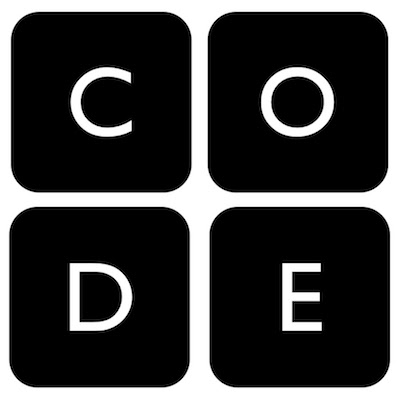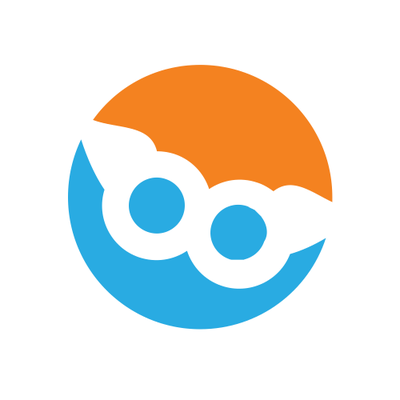When kids first start exploring the world of coding, they usually begin with a block-based approach, where the actual coding language is embedded in drag-and-drop blocks that snap together. As kids become more experienced, they are usually ready for more challenge. That might mean using actual programming text or jumping right into applying computational thinking in fairly sophisticated games. Either way, there are lots of cool platforms that can serve as a bridge from elementary coding to a more advanced approach that allow students to jump into the weeds of JavaScript or Python. We've chosen an overall top choice that covers lots of bases, but there are plenty more great tools that might fit your specific needs, so check out our selections below!
Please note: Common Sense Education is a nonprofit with a strong commitment to an unbiased, in-depth editorial process. Our ratings and reviews of learning media aren't influenced by developers or funders, and we never receive payments or other compensation for our reviews.
Best overall


Our top pick

A thoughtfully planned, produced, and curated set of free resources bound to get kids hooked on learning to code.

If you need a free advanced coding tool for students that also offers excellent support for facilitators and fun game-building, look no further than Code.org. Need a longer course? Check. Hour of Code? Done. It's also translated into many languages and has an accessibility guide. Plus, you can sort activities by the type of classroom tech you have, including screenreaders, or even "poor or no internet"! It does have some limitations: It focuses mostly on JavaScript and doesn't include actually writing code from the ground up. So, for kids who are super advanced or who want to learn Python, check out our other options.


Runner-up

The well-designed Python lessons and user interface is great for serious coding instruction.

The next best tool, that still gives teachers lots of support and provides scaffolding for students, is Codesters. Students can play around in a sandbox environment, create games and apps, get immediate feedback, and use a peer review option. It has its own LMS, lesson plans, PD, and an educator guide, though it's not free like Code.org. It focuses on the Python coding language and it's primarily for middle school, but there's a set of cool cybersecurity courses that widens its breadth a bit. If you're looking for other options that serve as a bridge from blocks to text, you can also check out CodeMonkey and Codementum.
Best for practical application

Great choice for a full unit or class on game design; fuels students game-making dreams.

Gamemaker Studio 2 lets students create games they can use. Plus, the version for classrooms has tons of teacher supports, lesson plans, and a thriving community. Because it's a download rather than a web-based experience, it will take up space on school computers. If kids want to explore different options for making apps and games at a professional level, they can also check out AppInventor or Unity Learn. And if you want an option that applies programming with a cross-curricular approach, try Blackbird!
Best for a game-centered approach

This gorgeous, immersive programming game encourages novel solutions.

If you're looking for a way to approach computational thinking and problem solving but aren't trying to teach actual coding language, The Pack is a great option. It’s free, has a teacher guide, a tips and tricks guide, and an option to play on Windows. As they figure out the controls, goals, and puzzles, having students zoom out to reflect and do some metacognitive analysis can really boost the value. And if this game isn't quite right for your classroom, 7 Billion Humans and CodeCombat are other options to look into.
Best for other kinds of creativity

Challenging tool for students to explore coding in a meaningful way.

Earsketch applies coding to music-making and allows for a different level of self-expression and creativity. Though some kids are super into video games, others are interested in music, so peeling back the layer on their favorite music-creation tools down to the code lets them learn programming as a labor of love. And if there are students who are more into video and social media-related creativity, check out Vidcode as another option.
Compare the tools
|
|
|
|
|
||
|---|---|---|---|---|---|
| Grades | K–12 | 5–8 | 7–12 | 6–12 | 7–12 |
| Price | Free | Free to try | Free, Paid | Free | Free |
| Privacy | |||||
| Platforms | Web | Web | Web | iPad, iPhone, iPod Touch, Mac | Web |
| Pros | Focused activities allow students to work at their own pace and stay challenged. | Lessons with a focus on actual text-based coding provide real-world programming experience. | Offers an easy-to-use drag-and-drop interface for novices; powerful scripting for pros. | Calm, beautiful graphics; basic coding techniques are difficult enough to keep students challenged. | Helps students see the connection between code and creativity, step-by-step. |
| Cons | Without guidance, students might choose activities at random instead of following the scaffolded curriculum. | The text-heavy interface might be challenging for some students. | Free version doesn't allow the creation of any executables; learning curve for novices is pretty steep. | Movement controls are hard to use, and the game is lacking in much help or instruction. | It might be overwhelming at first, and the built-in curriculum might require adaptation for some students. |
| Bottom Line | A thoughtfully planned, produced, and curated set of free resources bound to get kids hooked on learning to code. | The well-designed Python lessons and user interface is great for serious coding instruction. | Great choice for a full unit or class on game design; fuels students game-making dreams. | This gorgeous, immersive programming game encourages novel solutions. | Challenging tool for students to explore coding in a meaningful way. |
| Read our review | Read our review | Read our review | Read our review | Read our review |
How We Rate
Our recommendations are based on a research-backed rubric we use to rate apps and websites. Here are just a few sample criteria from this rubric:














